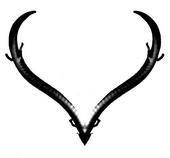Completely adapted to eternal darkness, the human fish hides in the depths of underground sources far from our inquisitive gaze. The pale skin contains no pigment and the tiny eyes can be seen only at the foetal stage. Later they athropy and skin grows over them. Approximately 25 cm long, with a flat tail surrounded by a skin-like fin, used for swimming, it is snake-like and this is the reason for its Latin species name anguinus (anguis = snake). It can also move using two pairs of legs - the front ones have three digits and the hind ones two. The entire body is more or less sensitive to light environment. It breathes in three ways. It has an excellent sense of smell and it probably also has a highly specialised sense for weak electric currents, which could partly explain its orientation abilities in the total darkness of the cave. On either side of its body, at the back of its head, there are three pairs of extended gills which have excellent blood circulation and are therefore of a bright red colour. In addition it has simple lungs, and when out of water it also breathes through its skin, for we must not forget that almost absolute humidity prevails in the cave environment.
It eats small animals, such as cave shrimps, amphipods and the larvae of various insects. Sometimes, under the cover of the night, human fish swim to the cave exit where they hunt for small surface water animals. Cannibalism is not unusual in mocherils either, but a fully-grown animal can naturaly only attack very small young, as its blunt muzzle and small teeth make it no fearsome predator. Proteus has always caused great fascination, since it can remain in captivity without food for an incredibly long period. Reliable and documented reports by various observers are known about their ability to go without food, the longest such period having gone on at the Faculty of Biotechnology for the last 12 years. It sounds impossible, but at the same time we know proteus' metabolism must be extremely decelerated, since the human fish reaches sexual maturity only at the age of 16 to 18 years and it may even reach the grand old age of 100. A special chapter in the history of research into the human fish deals with the mysterious question of the animal's reproduction. Diver have swam through kilometres of siphons and underground lakes, researchers have turned countless stones, but so far nobody has seen where or how the life of this mysterious creature begins. We can only assume that proteus reproduces deep down in the peaceful and inaccessible watercourses of the karst underground.
Rumore 188 September 2007 by Maurizio Blatto
Having clearly established the sonic field and key inspiration of the overall work, know that this is a successful and highly evocative disc. The musicians are: Fabrizio Modonese Palumbo and Paul Beauchamp with the contributions of Julia Kent and Marco Milanesio.
Guitar, electronics, cello and bass lead the listener down the fluid and inaccessable path of Proteus, the neotenic salamander that lives for a hundred years, capable of surviving for twelve years without eating, living in the total darkness of subterranean lakes, keeping its gills for all its life and which has an up till now unknown reproductive method. Not exactly a pet for your niece , but certainly the ideal amphibian for melodic weavings that can restore solitude, infinte isolation and quiet diversity. Apart from Proteus anguinus, the album does not have an oppresive concept but mixes waves of ambience, in a Kranky style, with folk music vibes that could conquer fans of Calexico and Dirty Three’s desertic atmospheres. A faultless soundtrack for a cavernicolous vetebrate.
Blow Up 113 October 2007 by Daniela Cascella
Finally the long-awaited debut of Fabrizio Modonese Palumbo and Paul Beauchamp, a disc that offers an unusual and unpredictable mixture of electronics, strings, guitar, drones and field recordings: a collection of sounds sculpted with care, that at times lean towards hypnotic, monotonous melodies (accompanied by Julia Kent, who in addition to cello also orchestrated the string arrangements) and at times accentuates a tendency to abstraction thanks to the contribution of Marco Milanesio. The field recordings captured in the Bossea Cave wrap the disc in a bursting and organic atmosphere, in which morbid strings infect sweet lullabies, and wrapping expanses are sucked into the slow whirlwind of obstinate rythms.
Though inseperable from the numerous and illustrious collaborations of its components (Larsen, Michael Gira, Current 93, just to name a few) the sound of Blind Cave Salamander presents itself as completely original: a very personal inflexion that insists on a hybrid vision of natural and synthetic of which, like the salamander that gives its name to the project, we will never discover the origins, but of which we can get the penetrating and submerged unraveling.
.Booking:.
O.F.F. booking+management
